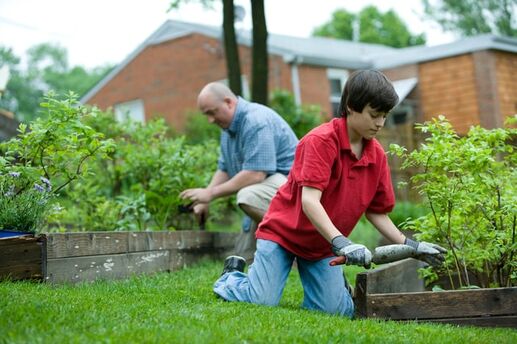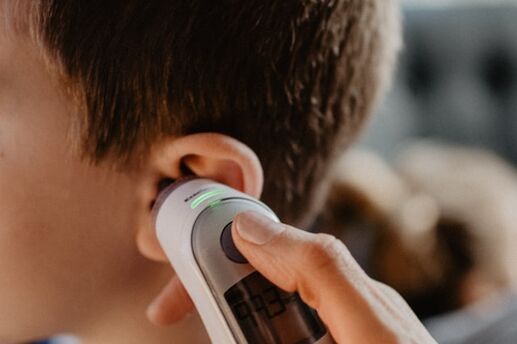Family Movie Night: Best 15 Movies of All Time
Family movie nights are one of the most fun and affordable ways to spend time together. But choosing a flick the whole crew agrees on can be a struggle! To the rescue: our list of family-friendly movies sure to pleasure kids and parents alike. So fire up the popcorn-maker, turn down the lights -- and keep a stash of Puffs facial tissues close at hand for tearjerker moments!
THE CLASSIC
Family-friendly Movie No. 1: The Wizard of Oz (1939)
Although there are plenty of remakes, nothing beats the original Judy Garland film. She plays Dorothy, the Oklahoma girl who is swept away in a tornado to a magical land. Joined by a lion, scarecrow and tin man, she heads to Emerald City to meet the wizard who can help her get back home.
Family-friendly Movie No. 2: E.T.: The Extra-Terrestrial (1982)
Introduce your kids to your own childhood favorite. In this Steven Spielberg-directed film, a lonely boy befriends an extra-terrestrial accidentally left behind on Earth -- and must outsmart the authorities to help him return to his home planet. The poignant lessons are tissue-worthy.
Family-friendly Movie No. 3: The Princess Bride (1987)
A loving grandfather reads his grandson a classic fairy tale, which features swashbuckling pirates, swordfights and an epic love story. The plot has a little something for everyone!
Family-friendly Movie No. 4: Willy Wonka and the Chocolate Factory (1971)
Another Roald Dahl story is featured in this iconic movie. After winning a golden ticket, Charlie and his grandfather take a tour of eccentric Mr. Wonka’s chocolate factory. The fantastical factory is a child’s imagination sprung to life.
Family-friendly Movie No. 5 and 6: The Muppet Movie (1979) and The Muppets (2011)
Why not play a double feature with this Jim Henson classic and its modern sequel? In the original, Kermit, Miss Piggy and the gang set off to seek success in Hollywood. The second film picks up after they’ve already gotten famous and disbanded. To save their theater from a greedy oil tycoon, they must reunite and throw a benefit concert.
Family-friendly Movie No. 7: The Lion King (1994)
After the death of his father, a lion cub named Simba is exiled from his pride by his wicked uncle. In young adulthood, Simba comes across what’s left of his pride. Along with his friends, a meerkat and warthog, he must fight to regain his rightful throne.
Family-friendly Movie No. 8: Babe (1995)
Featuring a farm full of adorable animals, this movie focuses on Babe, a pig raised by a sheepdog. Despite skepticism and ridicule, Babe learns how to herd sheep -- and even enters a contest. Your family will cheer during this against-all-odds story!
THE LATEST
Family-friendly Movie No. 9: My Neighbor Totoro (1988)
In 1950s Japan, two sisters and their dad move to the countryside due to their mother’s illness. There, the girls discover that their house and neighborhood is filled with magical creatures. This simple and beautiful story about friendship is a fine pick kids and adults of all ages will love.
Family-friendly Movie No. 10: Up (2009)
In this colorful Pixar movie, a retired balloon salesman ties thousands of balloons to his home and floats off to explore South America -- unknowingly bringing along 8-year-old Russell. This hilariously mismatched duo sets off on a jungle adventure, teaching each other lessons along the way.
Family-friendly Movie No. 11: Cloudy With a Chance of Meatballs (2009)
Fling Lockwood thinks he’s a genius, except none of his inventions tend to work. When his town falls into an economic crisis, he is sure his latest invention -- a machine that turns water into food -- will save the day. But when it starts to rain burgers and chicken nuggets that cover the city, plans start to go awry. This animated revenge-of-the-nerds feature inspired by the beloved children’s book is bound to capture the hearts of your kids.
Family-friendly Movie No. 12: Fantastic Mr. Fox (2009)
Director Wes Anderson and actors Meryl Streep and George Clooney turn this Roald Dahl story into a wickedly clever film. After stealing chickens, Mr. Fox must help save his community from the farmers’ wrath.
Family-friendly Movie No. 13: Tangled (2010)
Rapunzel has joined the Disney stable of princesses. But instead of the passive damsel we grew up knowing, she’s a curious, spirited, young lass that wields a mean frying pan. This is a gorgeously animated, magical film sure not to disappoint.
Family-friendly Movie No. 14: Brave (2012)
Set in the Scottish Highlands, this animated film tells the story of Merida, a spirited princess who defies tradition and her mother’s wishes. In the process, she unknowingly puts her mother under a witch’s spell. A skilled archer, Merida, must save the day. In the process, she learns a lot about herself and her relationship with her mom.
Family-friendly Movie No. 15: A Monster in Paris (2013)
In this animated adventure taking place in 1910 France, a science experiment turns a flea into a 7-foot-tall monster. The flea is sweet and gentle and teaches kids the importance of not judging people based on their looks.
Photo by Erik Mclean on Unsplash






